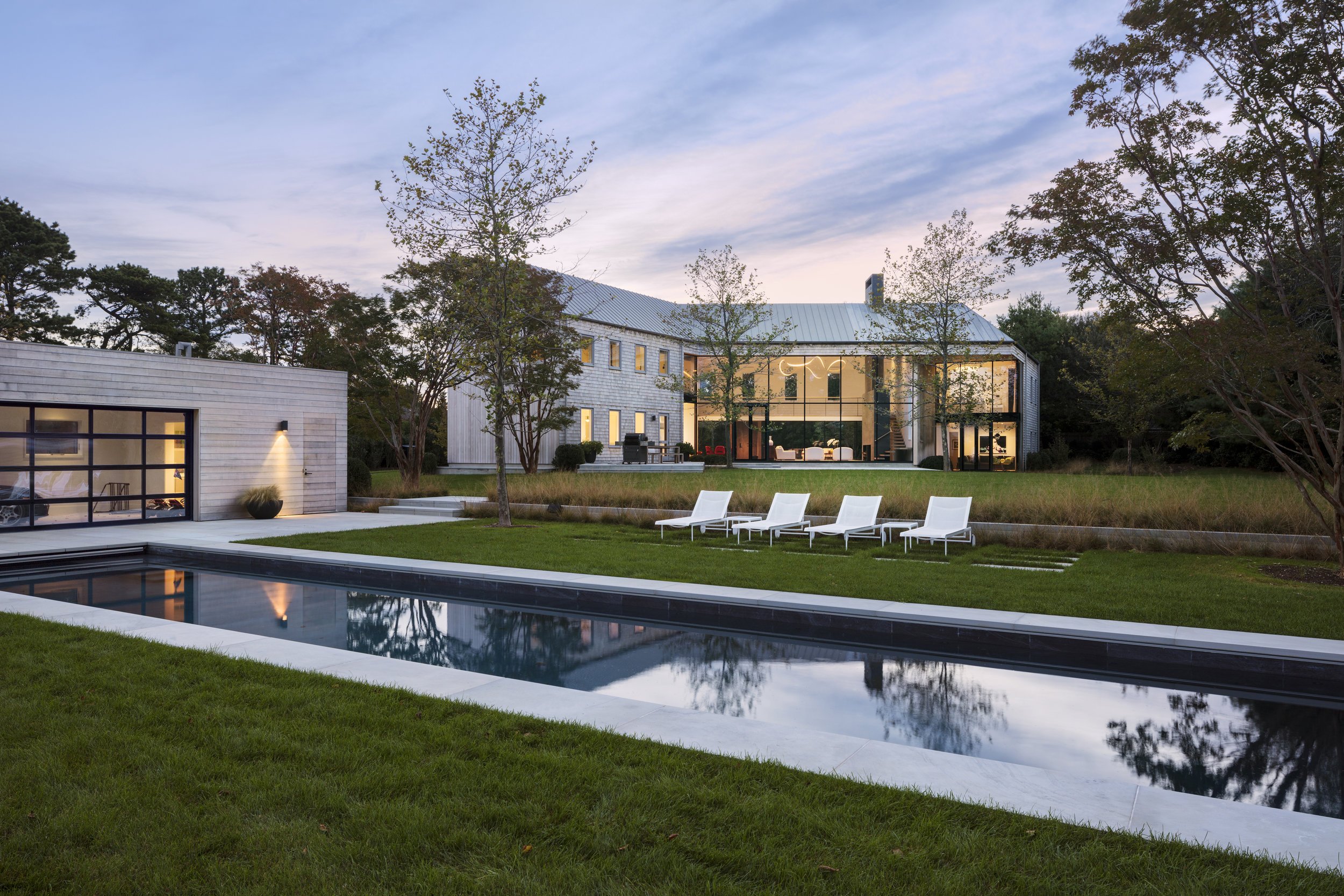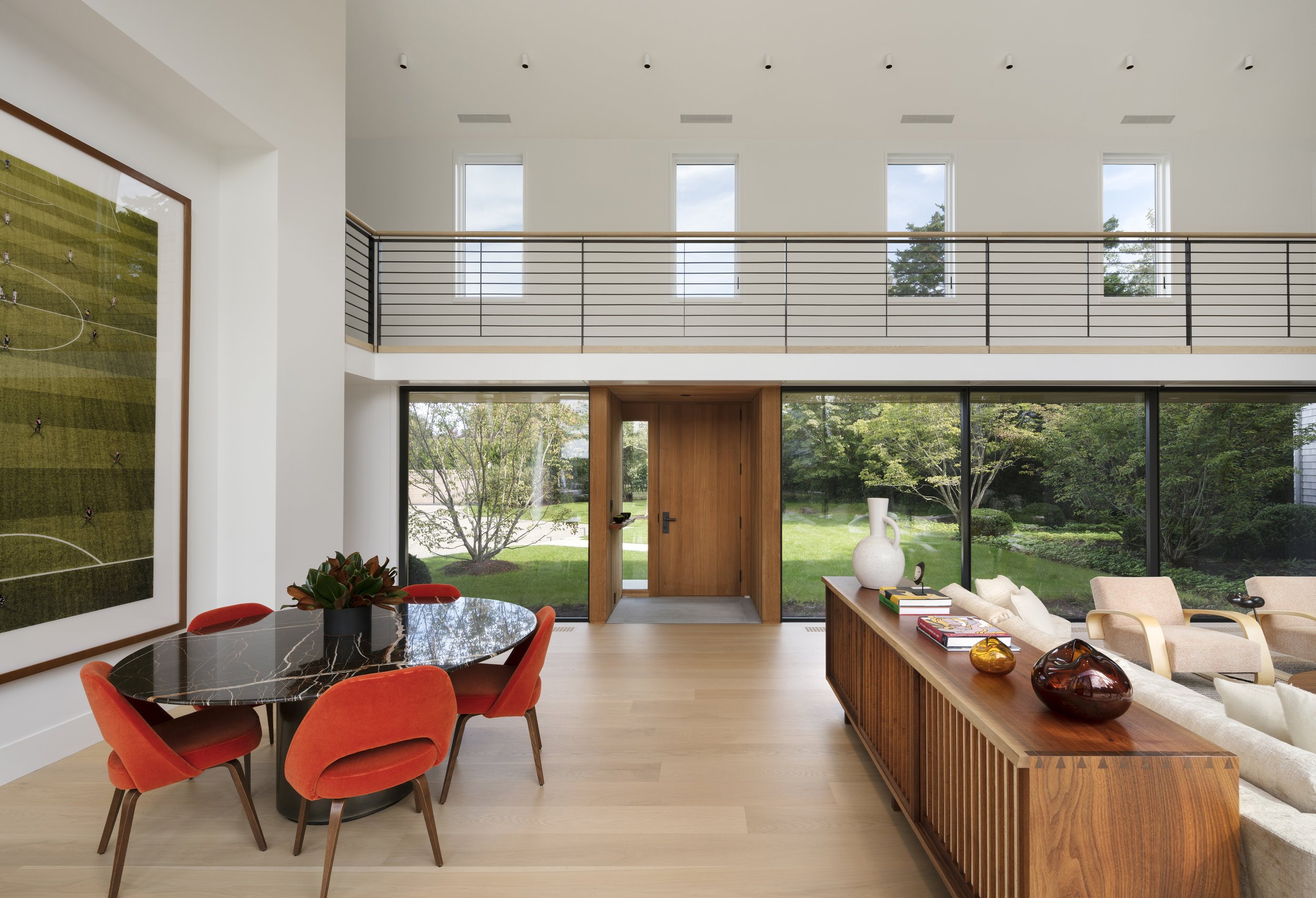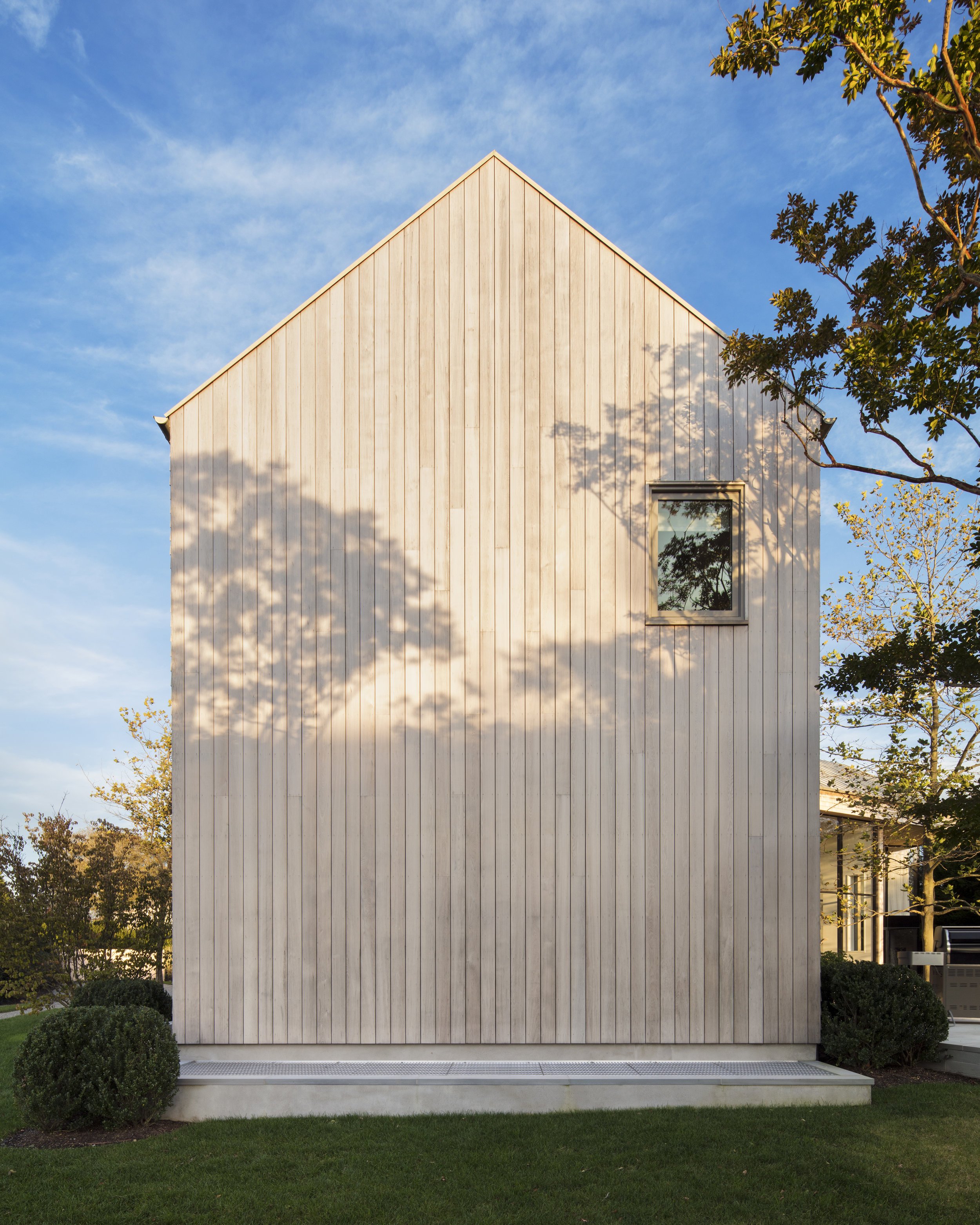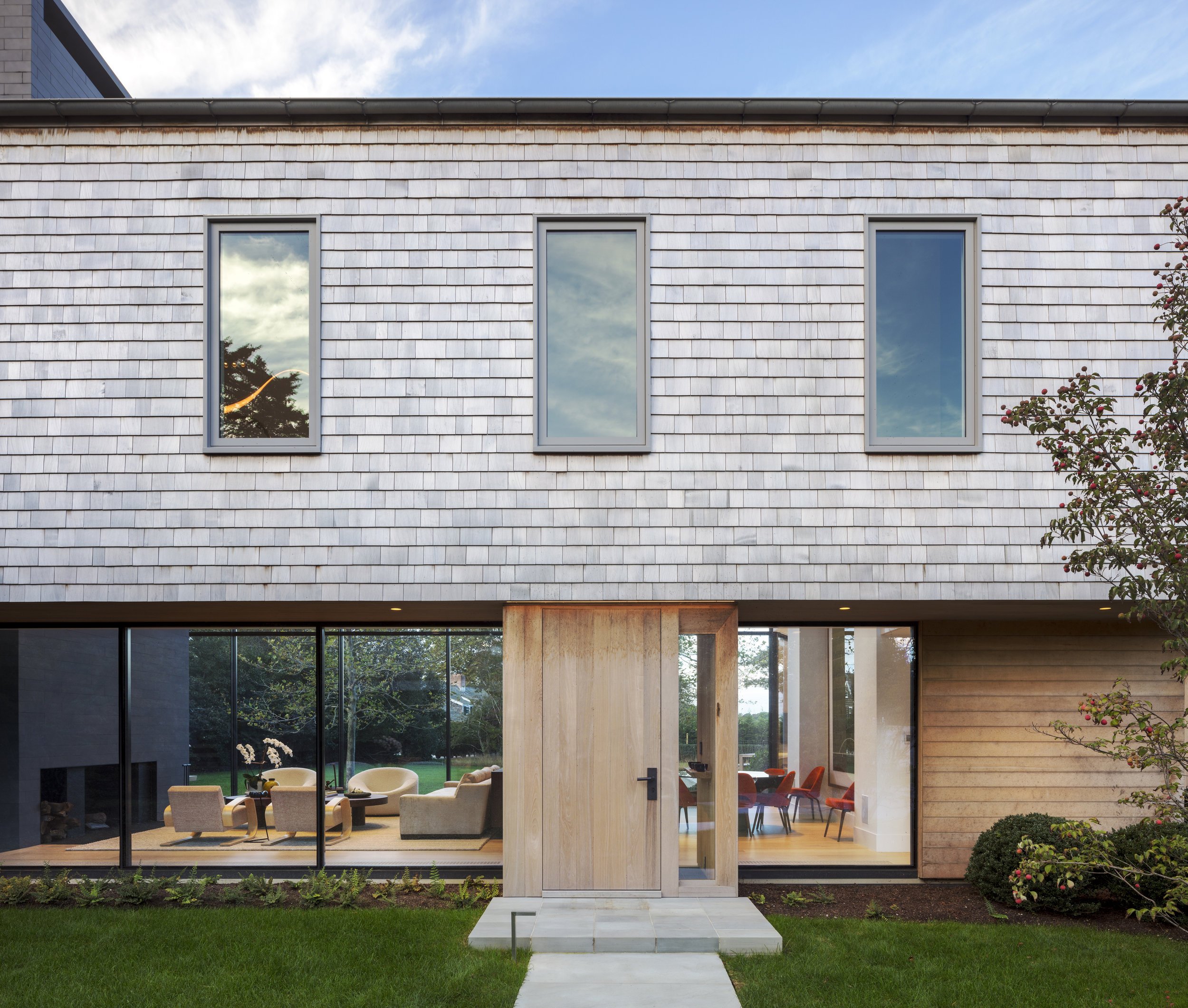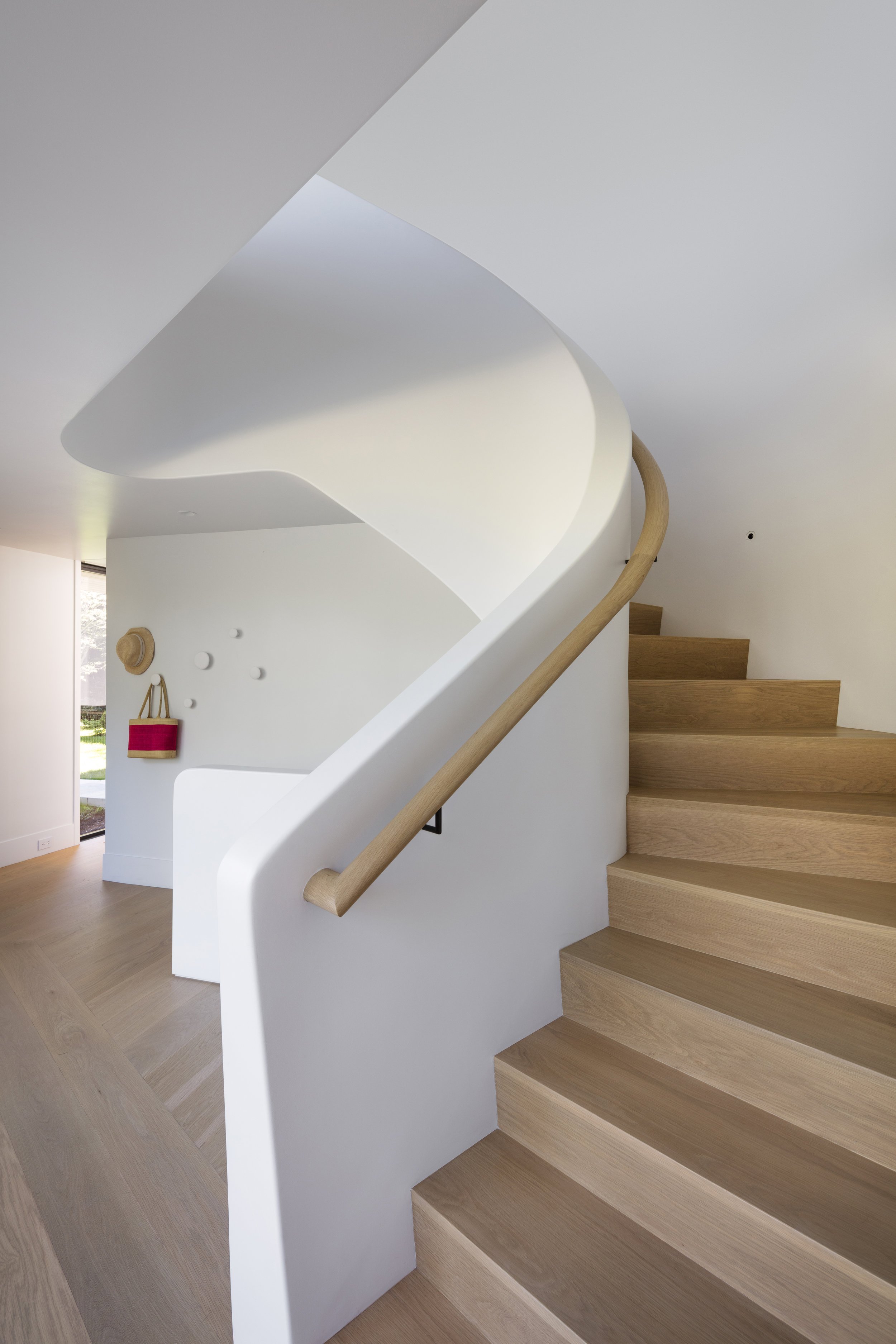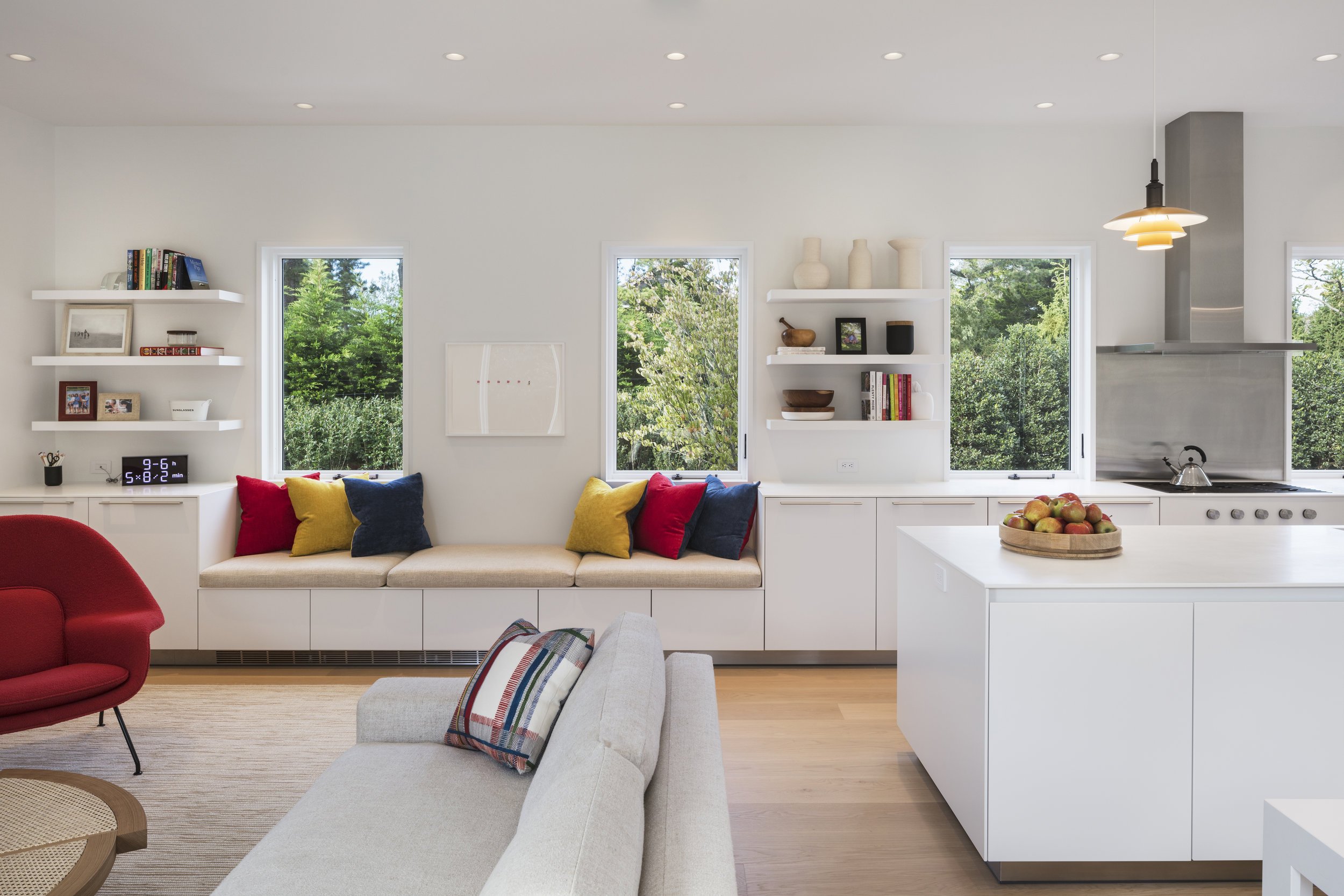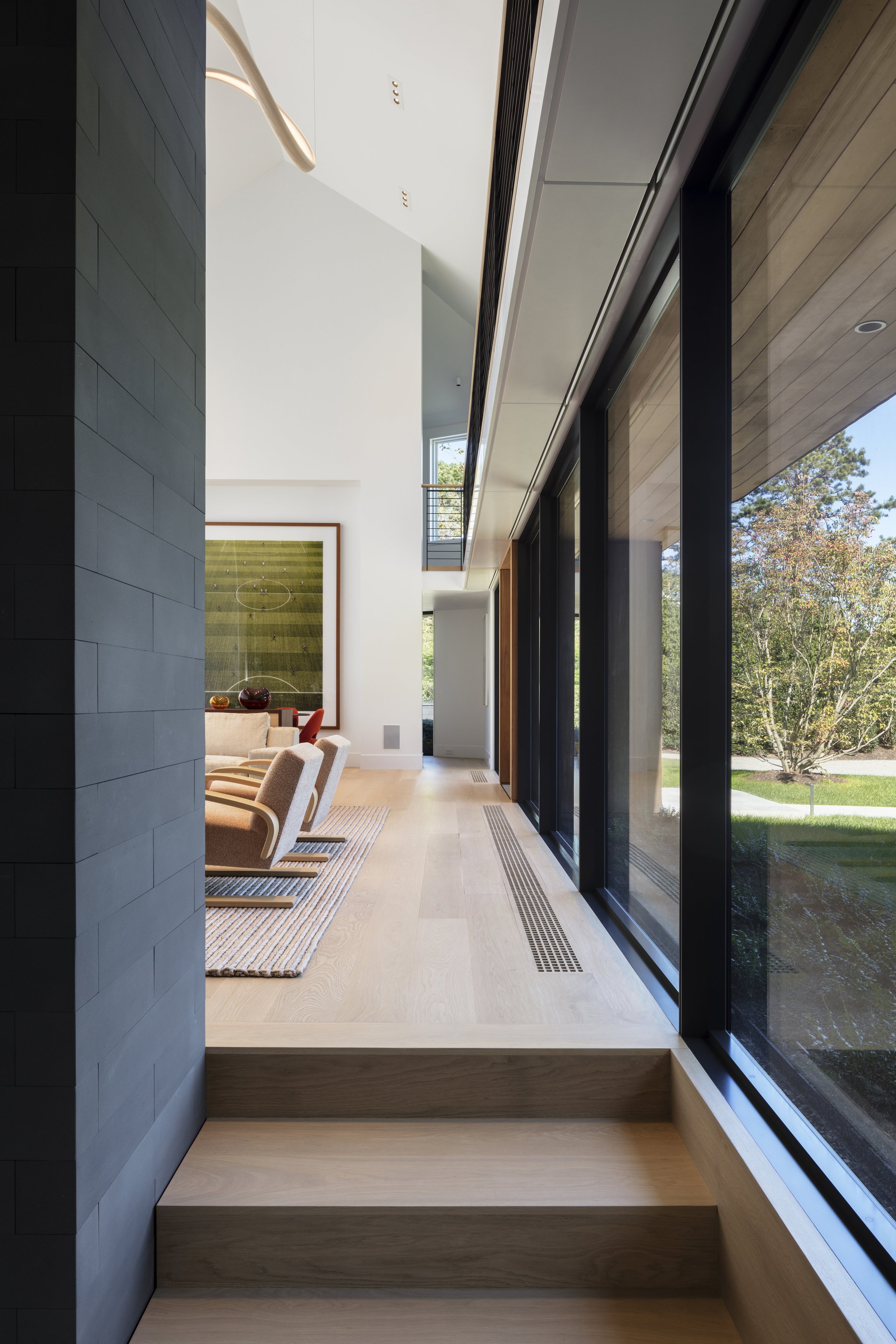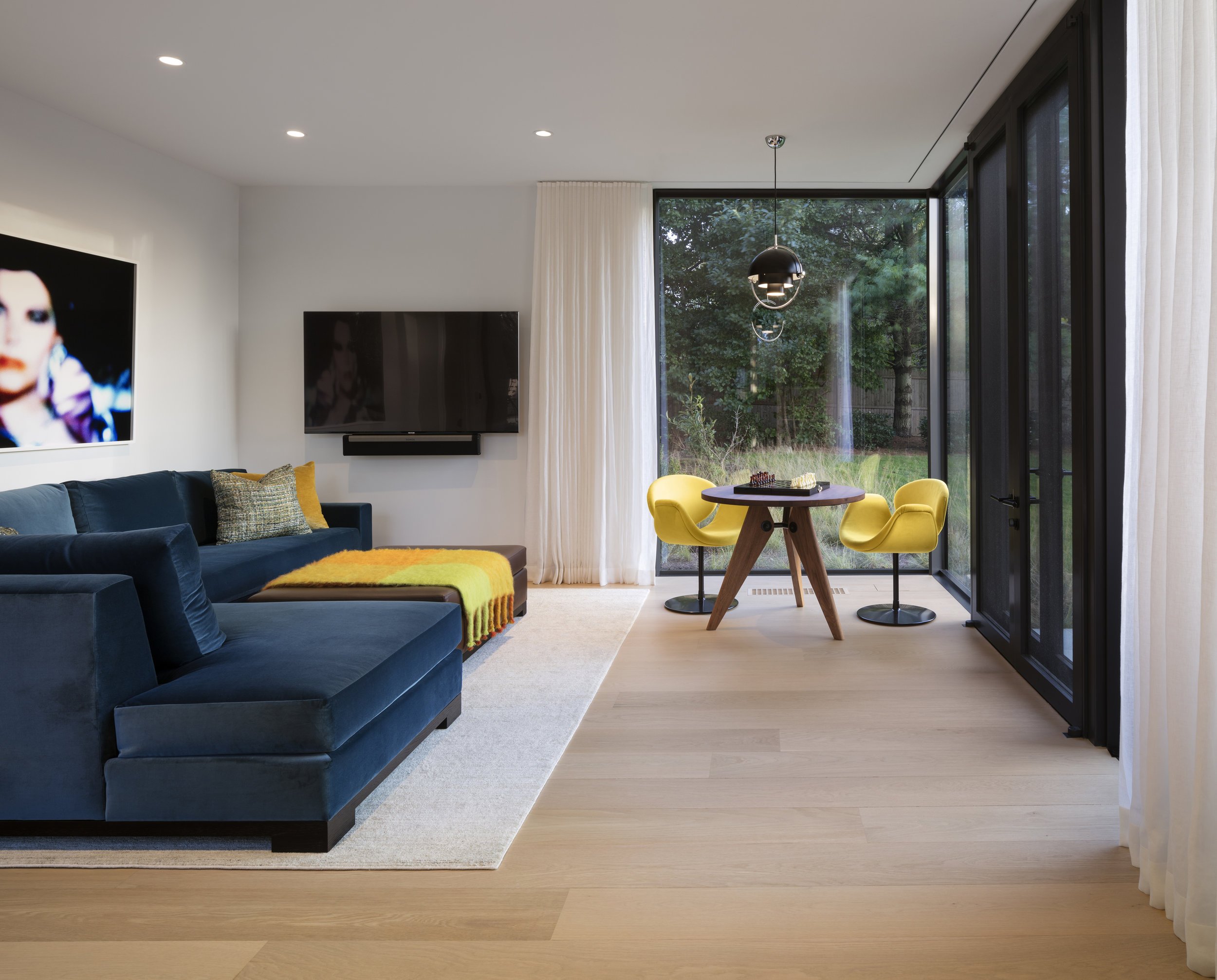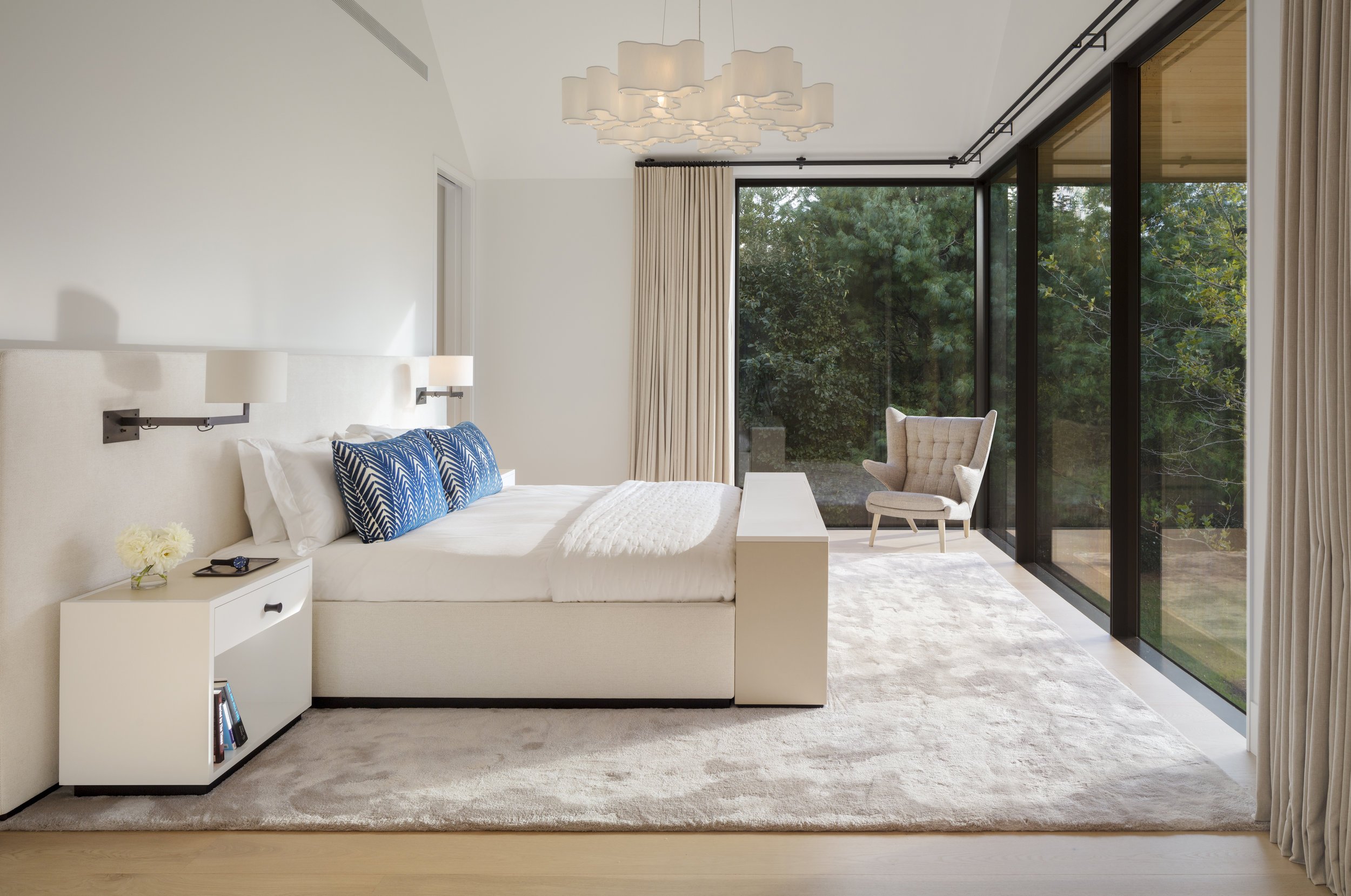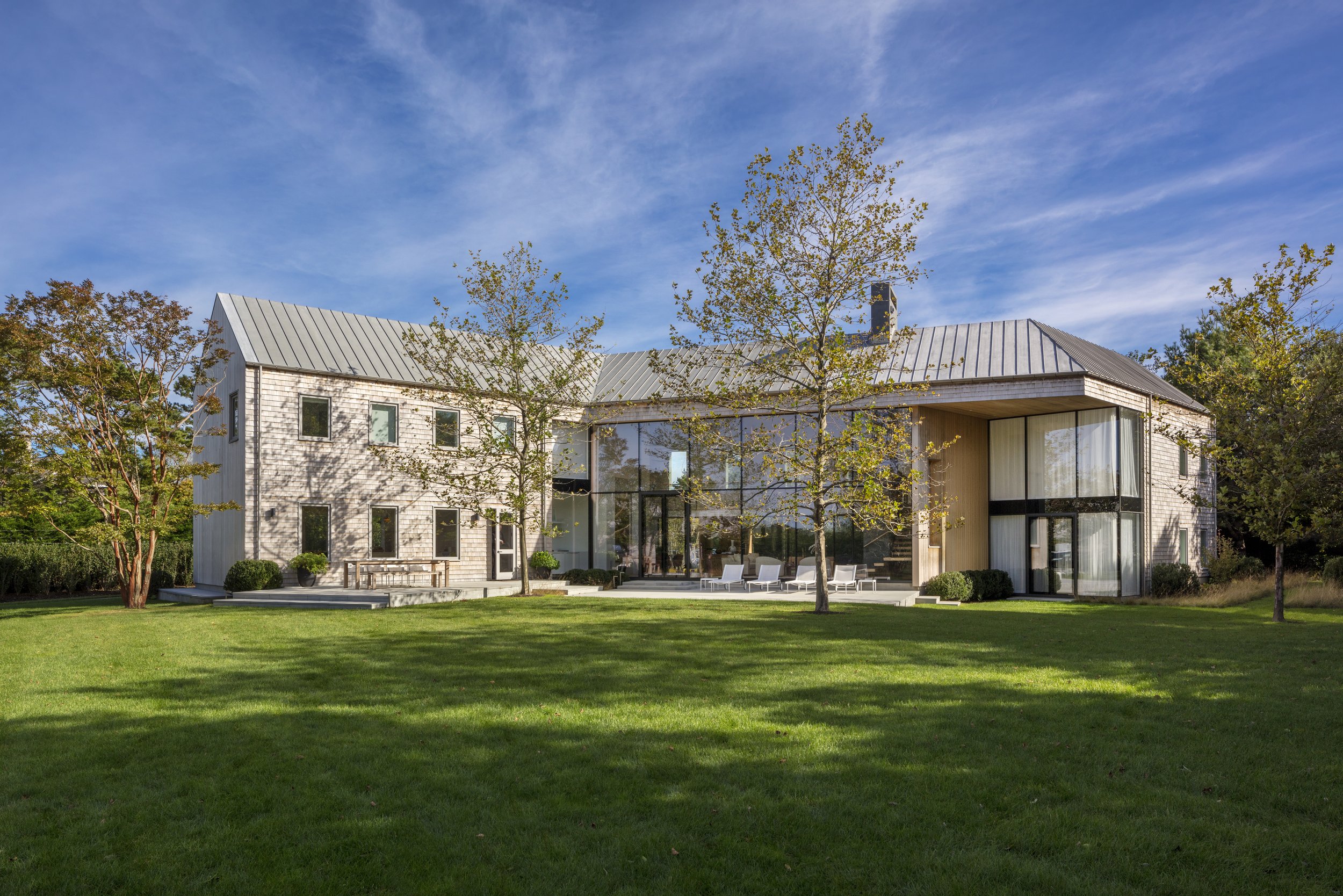EAST HAMPTON HOUSE
Built on a compound for a family who has a long history in the area, this East Hampton house reinterprets the traditional Hamptons style into a modern and playful home.
The family built their first home in 1993 as a Colonial Revival shingle house that was designed to fit into the area’s architectural landscape. The house was subsequently renovated in 2012 to update the interiors for a more family-friendly and livable space for their grandchildren and to showcase the family’s 20th-century art collection.
During the family’s tenure in the area, they purchased an adjoining property with the initial idea to build a guest house; however, the daughter and son-in-law instead chose to build a home for their growing family.
The new house nods to the original with its similar materiality and play on tradition. Its exterior is clad in the Hamptons’ ubiquitous cedar shingles along its sides, and at the building’s ends its platonic profile is emphasized by vertical boarding running up to a pitched roof. The house acts as the gateway between the public street and private compound—both houses are connected by pedestrian paths, but have separate drives that strike a balance between shared and distinct spaces.
The volume of the house has been carved away to express a connection to the landscape, with a front entry that frames the communal landscape beyond and a double-height modern glass curtain wall that opens views to the grandparents’ house across the compound.
The house’s family-friendly design pays tribute to its classically-inspired symmetrical roots with a central public space that links two private wings that playfully pivot out in opposite directions. Both wings, accessible by a bridge through the living/dining room, have their own stair – one encircling a monolithic basalt fireplace and the other, a plaster-formed graceful spiral.
The house is further tied to the original by its similarly appointed interiors. Neutral undertones paired with vibrant pops of color are used throughout the new house and are reminiscent of the family spaces in their first. New and vintage pieces, new and found objects, along with subtle textures and the playful color palette all work together to create a joyful, familiar, and relaxed home for multiple generations.
Architectural Collaboration with Leroy Street Studio and Gregory Canaras
Interiors by D’Apostrophe
Landscape by FARM Landscape Design
General Contractor John Hummel & Associates
Photography by Christopher Payne

